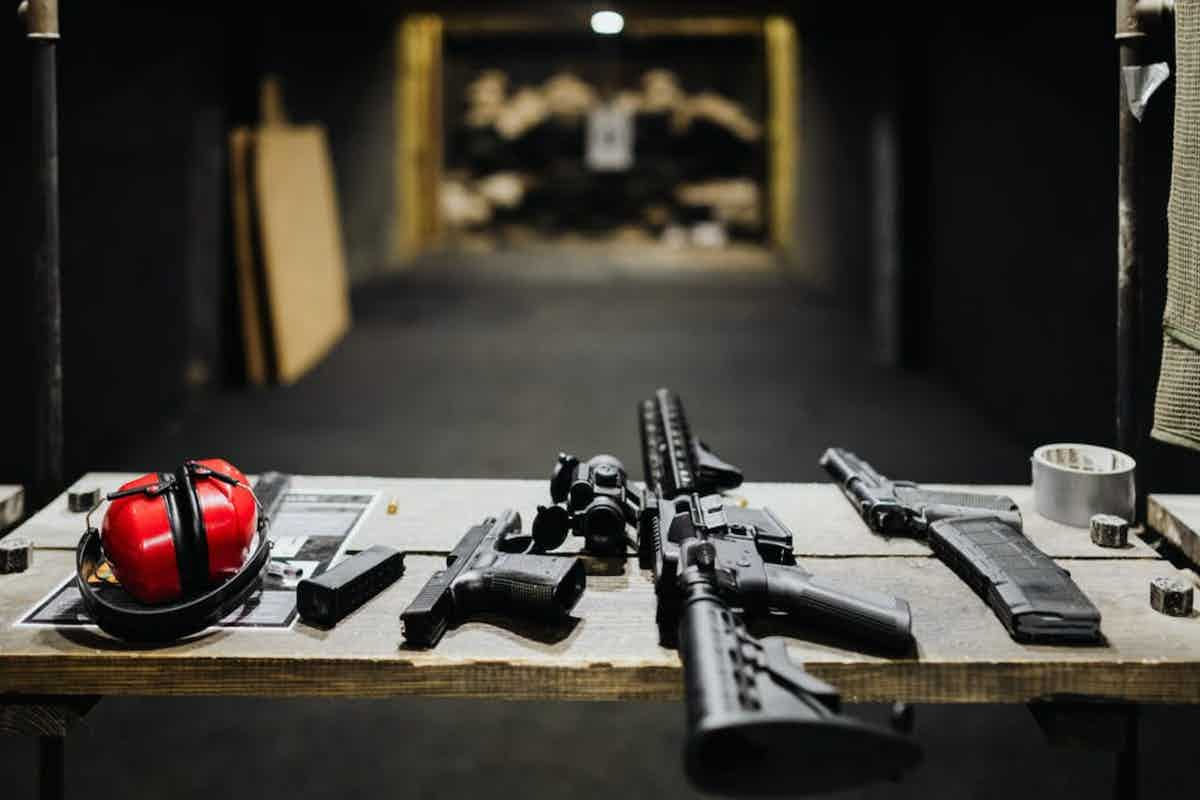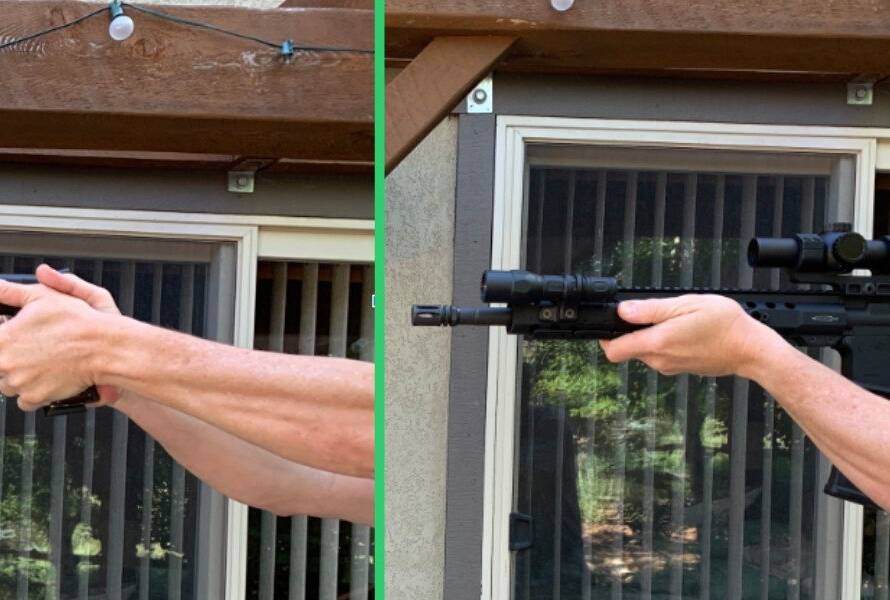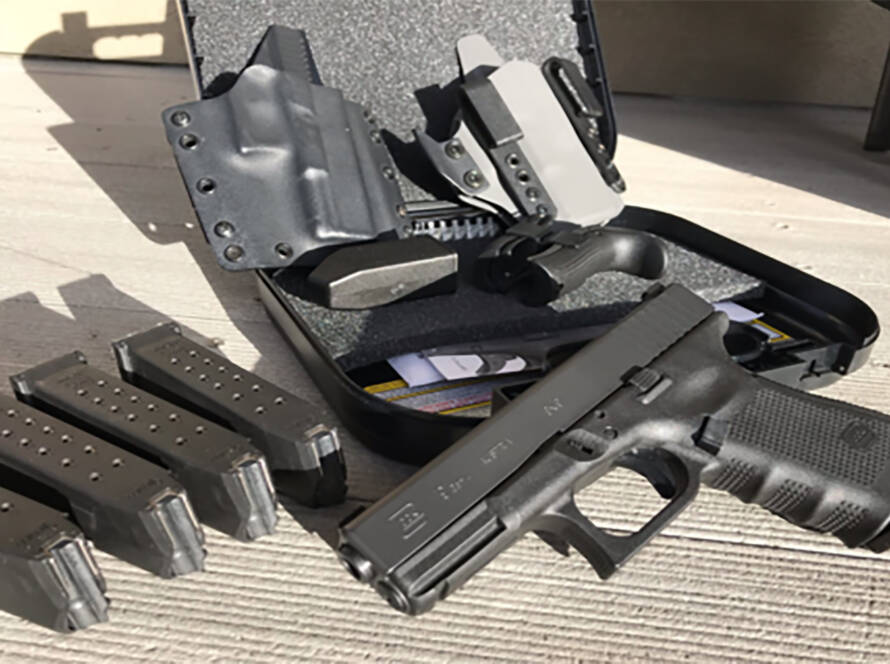Did you know that there are probably more than 400 million owned firearms in the United States? Although there are many nuances of gun ownership, understanding the different types of optics available is crucial. We put together a guide about what you should keep in mind when shopping for new optics or used optics. Let’s get started.
What Are Firearm Optics?
Firearm optics are devices used to refine the aiming point of a gun. In practice, optics, such as scopes and red dot sights, can provide you with a better view of the target. This is important for both up-close and long-distance shooting. There are many different types of optics available for purchase, so it’s important to understand the differences between them before investing in one.
What Are the Different Types of Firearms Optics?
Making the right decision involves having a strong understanding of the options available to you. Some are better for certain situations than others. Let’s take a closer look at some of the most notable.
Telescopic Sights
Telescopic sights (or scopes) come in various styles, power levels, and reticles. Some popular options include traditional crosshairs, illuminated red dots, and Christmas Tree reticles. The power level of a scope refers to its maximum magnification. Low-powered scopes are great for close shots, while high-powered scopes are preferred for longer-range shooting.
Reflex Sights
These come in different styles and reticles as well. They typically have an illuminated red dot or green dot, which allows you to quickly acquire the target. Reflex sights are great for close-range shooting, as they have unlimited eye relief and almost complete parallax correction.
So, it’s worth noting that they are both pleasant and easy to use. This makes them a great option for beginners.
Laser Sights
Laser sights are used to quickly acquire targets in low-light situations. They project a small visible laser beam. Since laser sights don’t magnify the target, they are not suitable for long-range shooting. Instead, they are best used in close quarters where the laser can help you line up your shots quickly and accurately. In most scenarios, you won’t need a laser sight. However, it can make all the difference when shooting in lowlight conditions.
Prism Sights
Prism sights, or prismatic sights, are a combination of reflex and telescopic sight. They provide you with the advantages of both scopes and red dot sights. Prism sights typically have more reticles than traditional red dots, and they are designed for both short-and long-range shooting. They also have parallax correction and adjustable brightness settings, making them a great option for any shooter.
Be sure that you take this into consideration when moving forward.
How Do I Find the Right Option For Me?
When looking to purchase optics, it’s important to consider the intended use of the firearm and your budget. You should also consider the environment you’ll be shooting in, as well as any specific needs that may be necessary for a successful hunt or target practice session.
Take into account how comfortable you are with using different types of optics and adjust your purchase accordingly. Ultimately, deciding on the right optics for you is based on a combination of personal preference and practical considerations.
How Do I Choose the Right Magnification?
The magnification makes a significant difference in how easy a scope is to use. Generally speaking, scopes with larger lenses are higher powered. For short-range shooting, most shooters prefer lower magnifications (1x to 6x). For long-range shooting, higher magnifications (6x to 20x) will provide more target visibility. As a general rule, the higher the magnification, the more expensive the scope. Make sure you consider this so you can budget appropriately.
Variable Scopes Vs. Fixed Scopes
When it comes to choosing between variable scopes and fixed scopes, it really depends on your needs. Variable scopes offer multiple power levels, allowing you to adjust the magnification as needed. They typically have a variable range of 3x-9x or 4x-16x. Fixed magnification scopes are not as popular as they used to be, and almost all currently available scopes are variable magnification.
What Lens Diameter Do I Need?
The lens diameter (or objective) of a scope is measured in millimeters. Smaller lenses are best for close-quarters shooting, and larger lenses are ideal for long-range shooting. Common sizes range from 24mm to 56mm. Keep in mind that the larger the lens, the more light it can absorb and the more eye box the scope will have, which results in better clarity, usability, and image quality.
What Is Parallax Adjustment?
Parallax adjustment is a feature found on higher-end optics that helps reduce error when shooting at long distances. It works by adjusting the focus to match the distance to the target.
It also helps ensure that your aiming point stays accurate as you move around or adjust any of the scope’s features. This feature is important for precision shooters and is a must-have for long-range shooting.
What Is Field-of-View?
The field-of-view (or FOV) is the maximum area visible through the scope. It’s usually measured in feet at a given distance (such as 100 yards). The higher the magnification, the lower the FOV. So, if you’re planning on shooting at long distances, it’s important to look for a scope with a wider FOV. This will directly impact your usability when shooting at extended distances.
Choosing an optic with a poor field-of-view can mean the difference between whether or not you are able to spot a missed shot and remain situationally aware.
What Are Focal Planes?
Firearm optics have two focal planes: the first and second (also called front and rear). Scopes in the first focal plane ensure that the reticle is always in proportion to the target. The reticle will get bigger and smaller in accordance with the magnification. This helps ensure that you can utilize the features of your reticle at any magnification. Scopes in the second focal plane ensure that the reticle will remain the same size regardless of magnification, which makes it easier to quickly acquire targets at close distances.
How Do I Ensure I Make the Right Purchase?
When purchasing optics, be sure to look for a warranty or guarantee from the manufacturer. This will ensure that you are protected if the product is defective or fails to perform as expected. Additionally, research customer reviews and ratings before buying any optics. This can help give you an idea of how well the product performs in real-world scenarios and will help you make the most informed decision possible. As long as you do your research, you shouldn’t encounter any issues.
What Are Common Mistakes That People Make?
One of the most common mistakes when buying optics is failing to thoroughly research the product. Make sure that you understand all of the features and read any reviews or customer testimonials before making a purchase. Additionally, be aware of how much magnification you need for your specific application, as this will help ensure that you get the right scope for your firearm. New shooters frequently buy much more magnification than is needed. Ensure that you understand the basics of parallax adjustment and how it applies to your shooting style. Finally, always make sure you purchase a product with a good warranty so that you are protected if anything goes wrong.
How Do I Maintain My Firearm Optics?
Proper maintenance of your firearm optics is important to ensure they last as long as possible. Be sure to always clean the lenses after each use and store them in a protective case when not in use. Also, check for any damaged or loose parts that could affect accuracy. Regularly inspect the scope’s adjustment knobs to make sure they are in working order. Finally, use a quality lens cloth or brush to gently remove any debris that may have collected on the lenses. Following these simple steps will help you keep your optics in top condition for years to come.
Finding the Right Types of Optics Doesn’t Have to Be Difficult
Although it might seem complicated at first, choosing the right types of optics is much easier than it seems. No matter what you buy, you will learn from the experience. As long as you keep the above information in mind, you’ll be sure to meet your needs.
Looking for more information about what we can do? Get in touch with us today to see how we can help.





